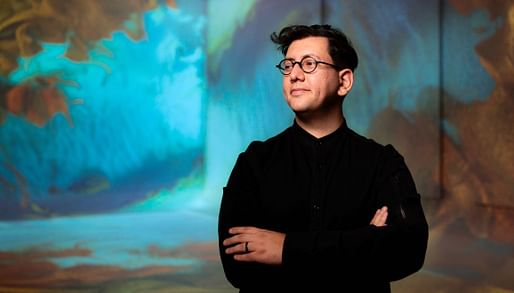
Refik Anadol Studio has announced the creation of the “world’s first open-source generative AI model dedicated to nature.” Titled 'Large Nature Model,' the model is trained “solely on nature’s inherent intelligence” as opposed to the conventional approach to AI large language model training, which consists of human-generated data such as art and text.
To train the model, Anadol’s studio used open-access information from institutions including the Smithsonian Institution and London’s Natural History Museum alongside various other universities, museums, foundations, government entities, and libraries. The studio is also visiting 16 rainforest locations around the world, deploying data collection technologies such as LiDAR, photogrammetry, and the capturing of ambisonic audio and high-resolution visuals of diverse ecosystems to further train the model.
“Our vision for the Large Nature Model goes beyond being a repository or a creative research initiative,” said Refik Anadol about the model. ‘It is a tool for insight, education, and advocacy for the shared environment of humanity.”
The project is being developed as part of DATALAND, the studio’s future museum, and Web3 platform dedicated to data visualization and AI art. The first results of the studio’s experimentation with the model will be displayed at the World Economic Forum in January in an installation titled 'Living Archive: Nature.'
The installation will include visuals, sound, and scent elements to highlight the “nuanced interplay between ecosystems” and demonstrate the potential for AI to engage in storytelling for a sustainable future. Consisting of a 39ft by 13ft media wall, the installation will include rainforest flora and fauna simulations, produced from collected rainforest data such as waterfalls, forests, birds, and flowers.

“Blending art, technology, and nature, our model aims to raise awareness about environmental issues and inspire innovative solutions by finding connections among isolated archives,” Anadol added. “Moreover, by engaging people on multiple sensory levels, the outputs of the model make the abstract concept of environmental conservation tangible, encouraging a collective responsibility to act.”
News of the project comes months after Anadol’s Machine Hallucinations generative AI piece was acquired by MoMA. Earlier in 2023, Anadol previewed a new AI data sculpture installation for the Los Vegas Sphere while in May, Anadol served as a juror for Archinect’s Generative Futures AI Storytelling Challenge.
Back in 2021, meanwhile, Archinect spoke with Anadol on themes ranging from artificial intelligence and nature to video games and media.
No Comments
Block this user
Are you sure you want to block this user and hide all related comments throughout the site?
Archinect
This is your first comment on Archinect. Your comment will be visible once approved.